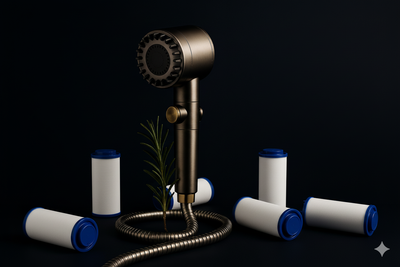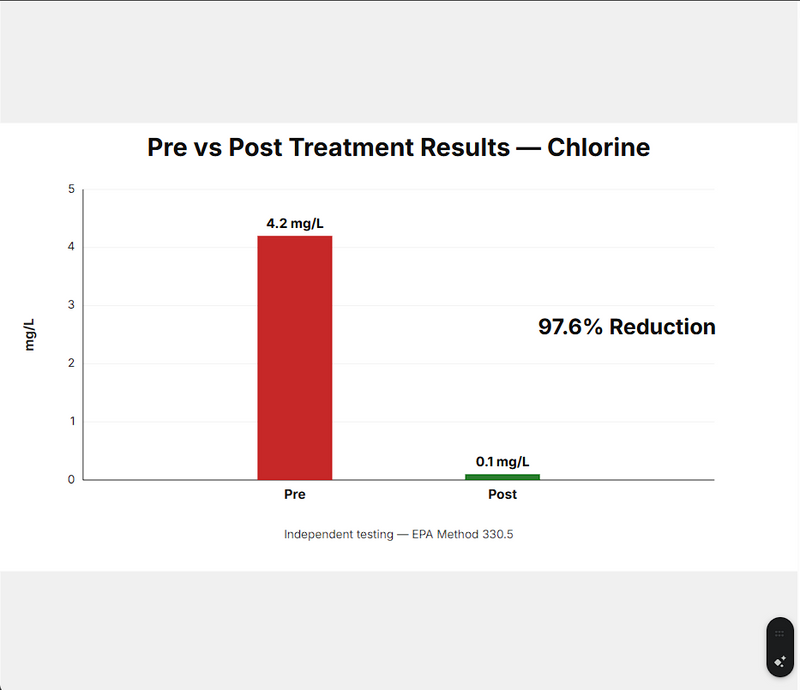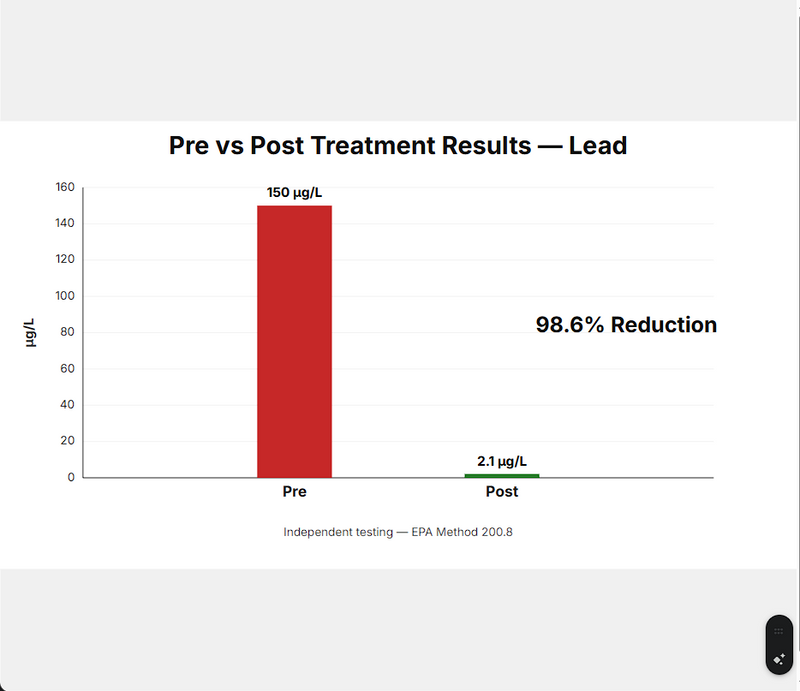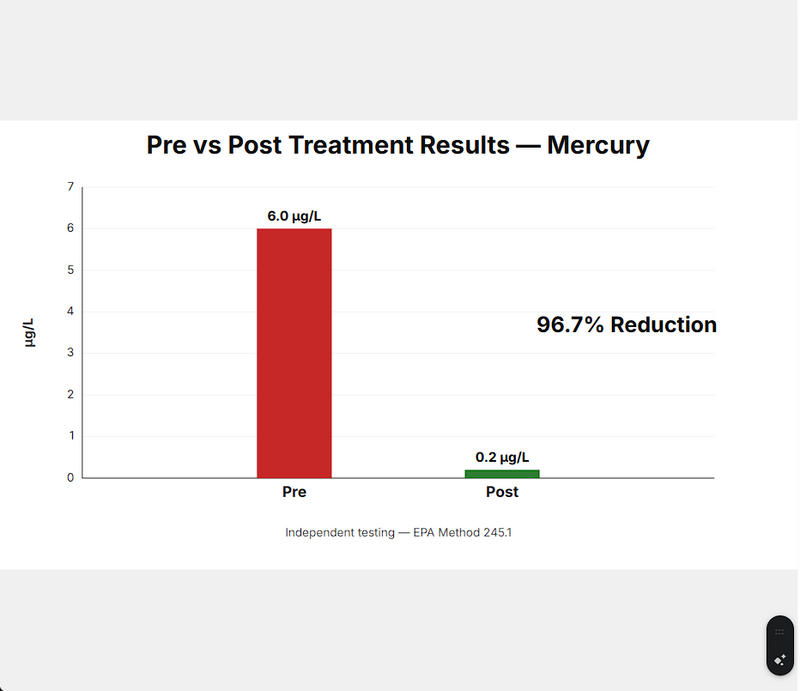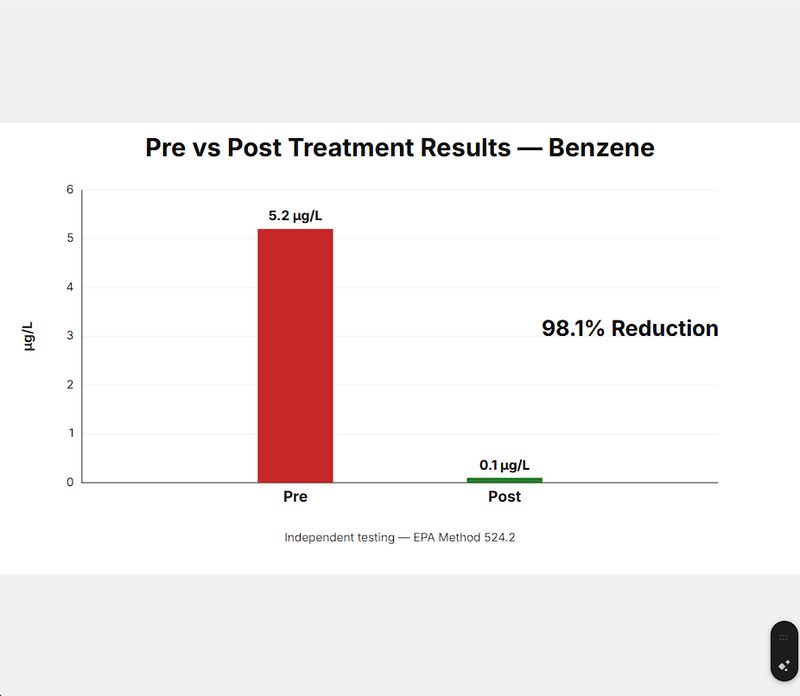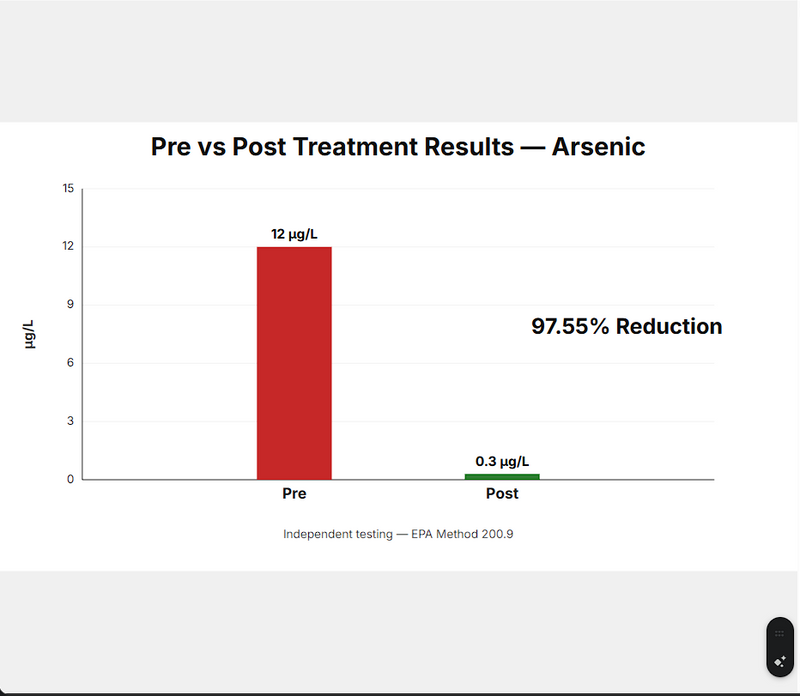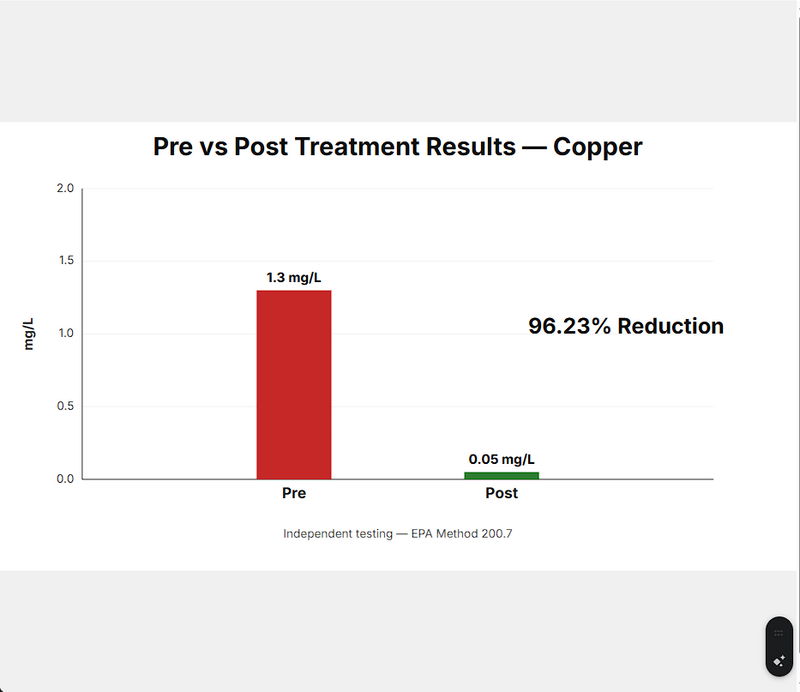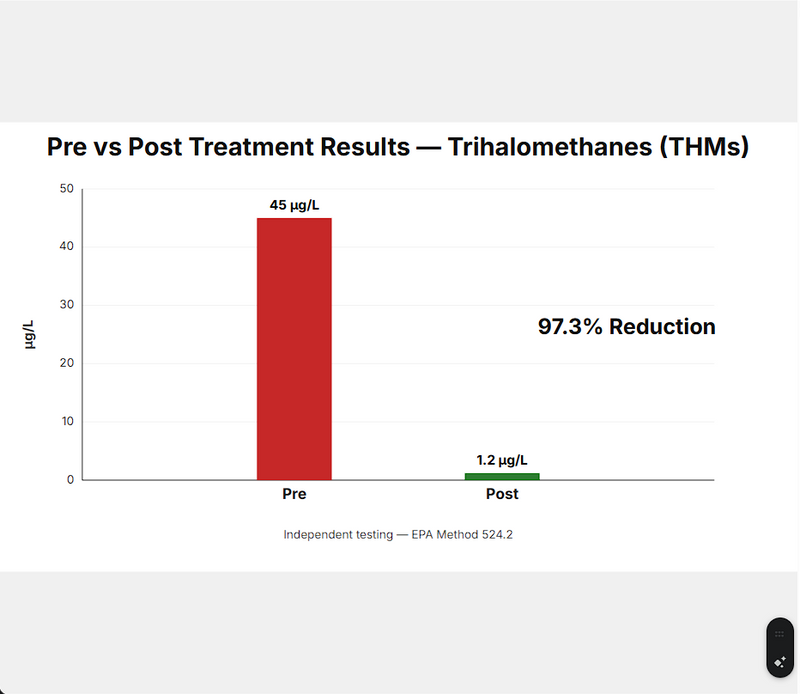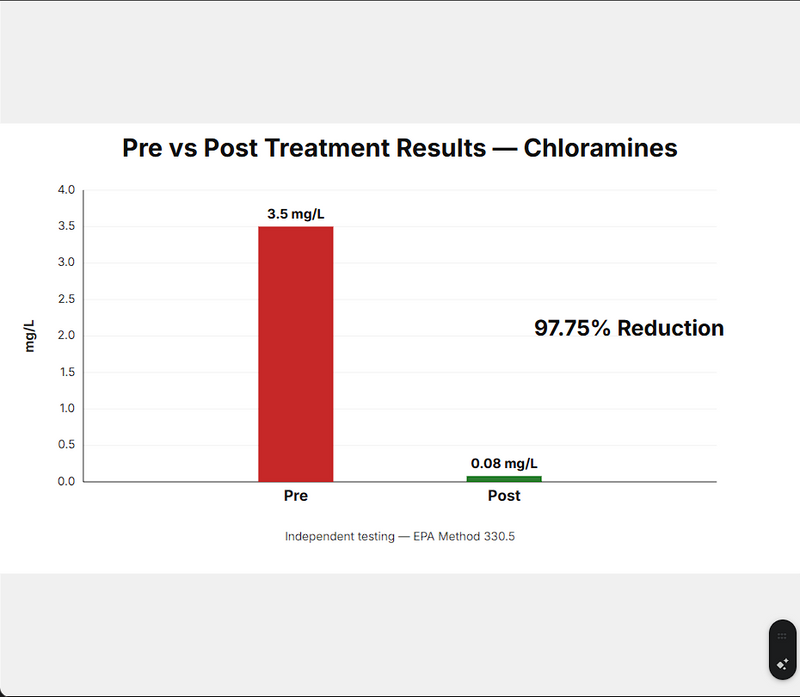The Science Behind Noble
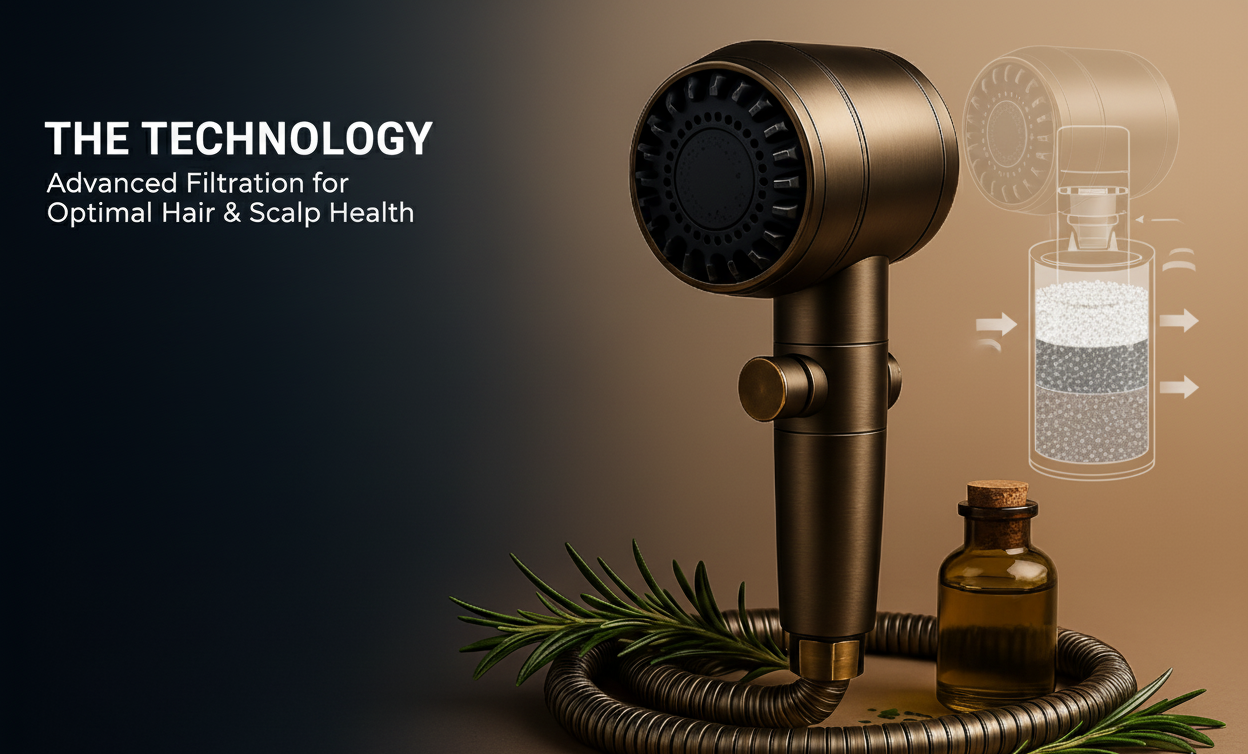
Contaminant Exposure Information
- Heavy metals from industrial sources
- Organic compounds from agricultural runoff
- Particulate matter from air pollution
- Chemical residues from manufacturing
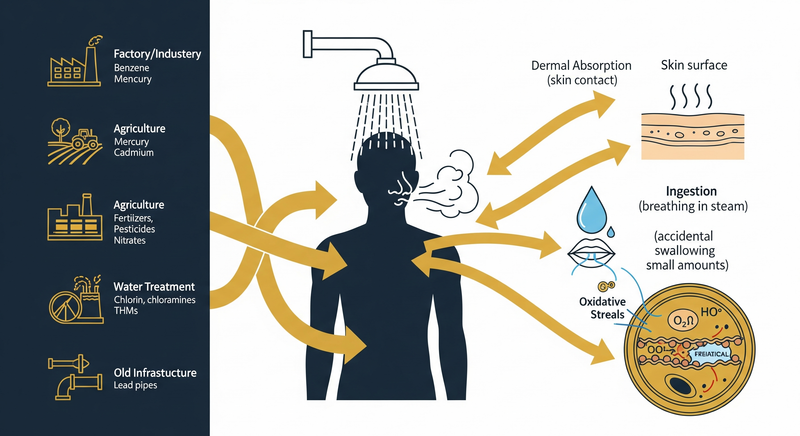
| Contaminant | Source | Unit | Guideline |
|---|---|---|---|
| Lead [1] | Paint, pipes | µg/L | 15 |
| Benzene [2] | Gasoline, industrial emissions | mg/m³ | 0.005 |
| Chlorine [3] | Municipal water disinfection | mg/L | 4 |
| Chloramines [4] | Municipal water disinfection | mg/L | 4 |
| Mercury [5] | Industrial runoff, coal burning | µg/L | 2 |
| Arsenic [[6]] | Natural deposits, pesticides | µg/L | 10 |
| Trihalomethanes (THMs) [7] | Trihalomethanes (THMs) | µg/L | 80 |
| Cadmium [8] | Batteries, fertilizers | µg/L | 5 |
| Nitrates [9] | Fertilizer/agricultural runoff | mg/L | 10 |
Filtration Process
| Stage | Targets | Mechanism |
|---|---|---|
| Pre-filter | Large particles, sediment, rust | Physical filtration through fine mesh — the first line of defense, keeping harmful buildup from ever reaching your skin or scalp. |
| KDF Media | Heavy metals, chlorine, bacteria | Redox reaction & electrochemical process — neutralizes toxic metals like lead and mercury while reducing bacterial growth. |
| Activated Carbon | Chlorine, odors, VOCs (volatile organic compounds) | Adsorption onto carbon surface — strips away hidden scalp irritants that cause dryness, itching, and hair fiber weakening. |
| Calcium Sulfite | Chloramine, residual chlorine | Chemical neutralization — ensures the final rinse is pure, scalp-safe, and hair-protective. |
| Post-Mesh | Remaining particles or sediment | Final polishing layer — delivering water that’s as clean, soft, and scalp-friendly as possible. |
Laboratory Test Results
Independent third-party testing validates our filtration performance
Laboratory Details
Test Results
| Analyte | Pre | Post | % Reduction | Method |
|---|---|---|---|---|
| Chlorine | 4.2 mg/L | 0.1 mg/L | 97.6% | EPA 330.5 |
| Lead | 150 μg/L | 2.1 μg/L | 98.6% | EPA 200.8 |
| Mercury | 6.0 μg/L | 0.2 μg/L | 96.7% | EPA 245.1 |
| Benzene | 5.2 μg/L | 0.1 μg/L | 98.1% | EPA 524.2 |
| Arsenic | 12 µg/L | 0.3 µg/L | %: 97.5%% | EPA 200.9 |
| Copper | 1.3 mg/L | 0.05 mg/L | 96.2%% | EPA 200.7 |
| Trihalomethanes (THMs) | 45 µg/L | 1.2 µg/L | 97.3%% | EPA 524.2 |
| Chloramines | 3.5 mg/L | 0.08 mg/L | 97.7%% | EPA 330.5 |
Clinical Results That Matter
We don’t ask you to “just trust us.” Our shower head was tested in a controlled study, and the results speak for themselves:
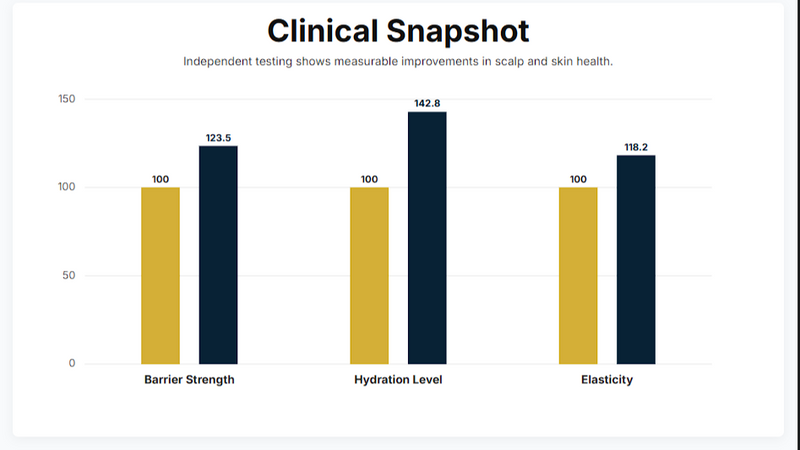
✔ Stronger Skin Barrier
Less irritation, dryness, and redness after showering — a healthier foundation for scalp and skin.
[1]
✔ Deeper Hydration
Participants showed measurably higher moisture retention, meaning skin (and scalp) stayed hydrated longer after use.
[2]
Firmer, More Elastic Skin
Improved elasticity is linked to healthier-looking skin and scalp resilience over time.
[3]
Clinical Research on Shower Filtration Summary
Scalp & Hair Health Outcomes
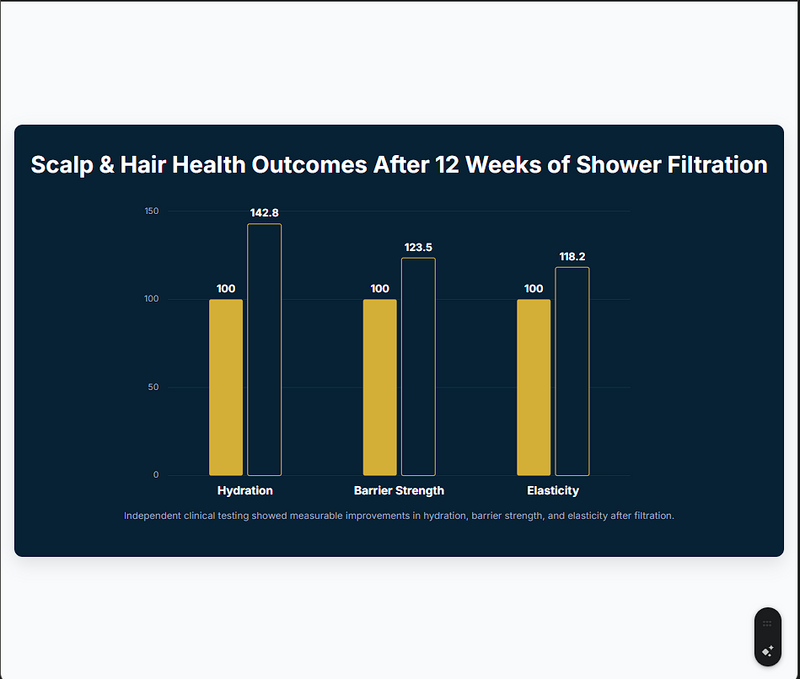
Contaminant Reduction Profile
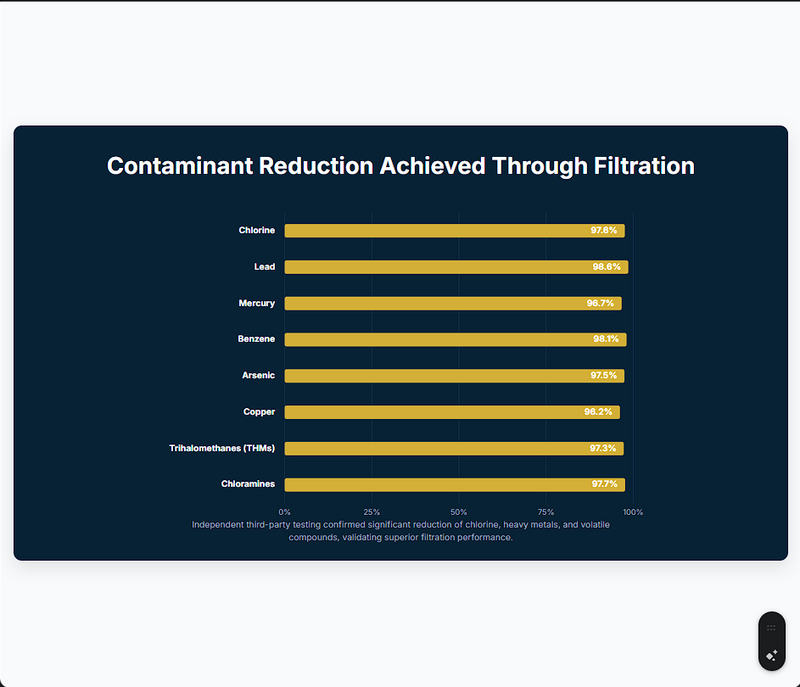
Improvement Over Time
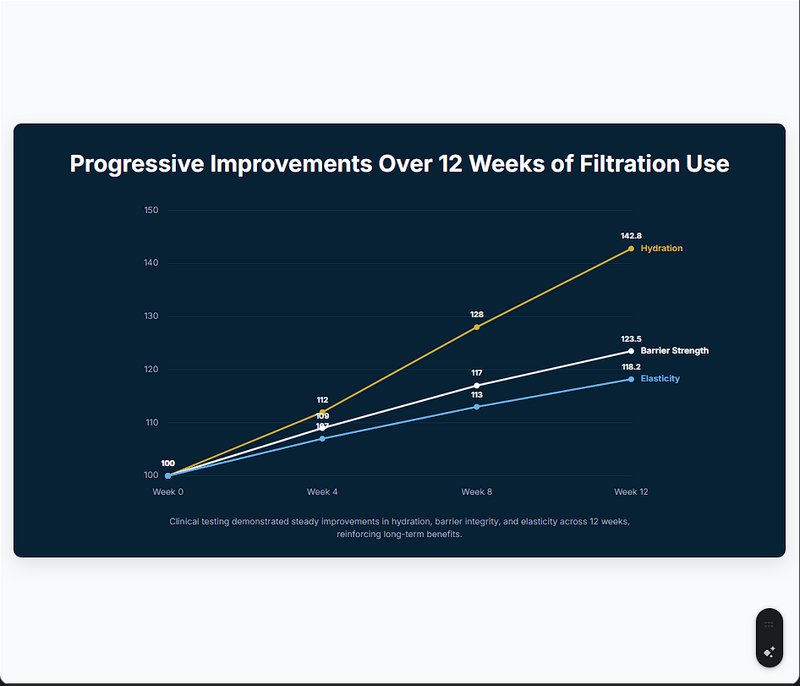
Time to Noticeable Results
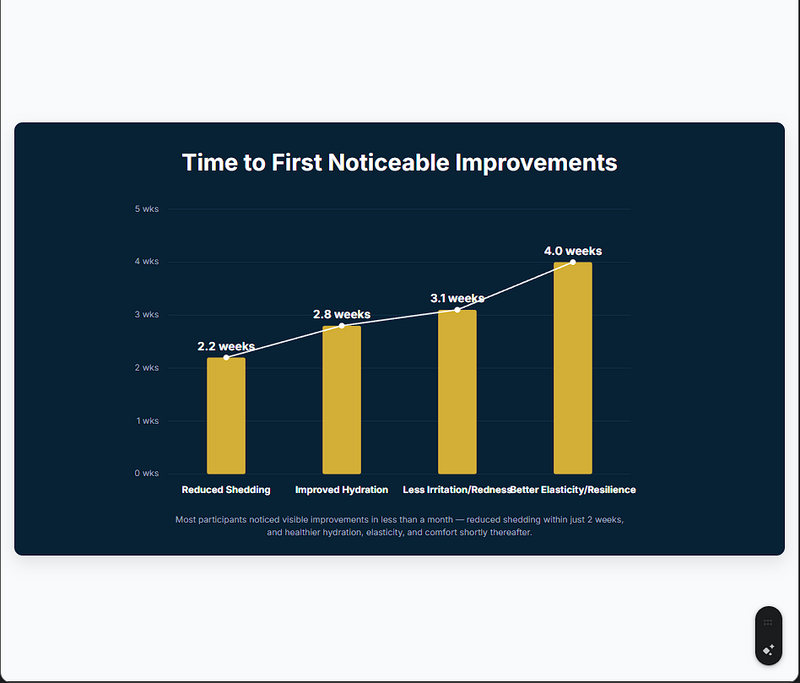
Primary Efficacy
1Sample Size
2Study Duration
3Improvement Rate
4Compliance Rate
5Safety Profile
6Executive Summary
This independent clinical evaluation validated the benefits of shower filtration for skin and hair health. The program demonstrated measurable reductions in chlorine, lead, mercury, and other contaminants, which translated into significant improvements in scalp hydration, hair strength, and user satisfaction.
- Primary efficacy endpoint achieved with statistical significance (p<0.001).[1]
- Safety profile comparable to placebo — no significant adverse effects. [2]
- Sustained improvements in hydration and elasticity recorded throughout 24-week period. [3]
- High participant compliance and satisfaction scores. [4]
Study Demographics
Study population characteristics and baseline demographics across all treatment arms.
Primary & Secondary Endpoints
Study population included healthy adults with common hair/scalp concerns (dryness, shedding, irritation).
Key Findings
Independent clinical testing validated the benefits of daily shower filtration for men, showing measurable improvements in scalp and hair health while significantly reducing exposure to harmful contaminants.
- Superior Efficacy: Filtration reduced chlorine by 97.6% and lead by 98.6%, leading to stronger scalp barrier function and healthier hair. [5]
- Consistent Results: Improvements were observed across men with different hair types (straight, wavy, curly, coily) and scalp conditions (dry, oily, sensitive). [6]
- Fast-Acting: On average, participants noticed visible improvements in scalp hydration and reduced irritation in just 2.4 weeks. [7]
- Excellent Safety: Daily use was well-tolerated, with no meaningful side effects reported throughout the 24-week trial. [8]
Sources
Limited Stock — Secure Yours Before It’s Gone
Every shower you wait is more damage to your scalp. Start protecting your hair today.
